Over the past two decades Singletracks product reviewers have tested upwards of 50 different hydration backpacks for mountain biking. With so many great choices out there, we’ve carefully considered each one and discovered our favorites.
Here we’ll share a list of the best hydration backpacks we’ve tested for mountain biking followed by helpful information to consider when choosing which MTB hydration pack to buy.
Singletracks hydration backpack recommendations
Whether you’re looking for a lightweight, minimalist hydration backpack or something to carry your chainsaw into the backcountry, these are the packs we recommend.
- Best MTB hydration pack: Osprey Raptor
- Best mountain bike hydration vest: Camelbak Chase
- Best minimal hydration backpack: Camelbak Rouge Light
- Best MTB backpack with back protector: EVOC Trail Pro
- Best trail builders backpack: Dakine Builder
| Hydration backpack | Hydration Capacity | Storage Capacity | Style | Price |
|---|---|---|---|---|
| Camelbak Chase | 1.5L*, 2L | 2.5L*, 6L | Vest | $105* |
| Camelbak Rogue Light | 2L* | 5L* | Simple | $85 |
| Dakine Builder | n/a | 25L*, 40L | Tool hauler | $220* |
| Deuter Race Air | 2L (not included) | 10L, 14+3L* | All around | $175* |
| EVOC Hydro Pro | 1.5L | 1.5L, 3L, 6L* | Vest | $150* |
| EVOC Trail Pro | 3L (not included) | 10L, 16L*, 26L | Protective | $260* |
| Mission Workshop Hauser | 3L (not included) | 10L*, 14L | All around | $260* |
| Osprey Raptor | 2.5L | 10L*, 14L, 18L | All around | $165* |
| USWE Outlander Pro | 2L | 2L | Race vest | $110 |


1. Osprey Raptor MTB Hydration Pack
Osprey was well regarded in the backpacking world long before releasing the Raptor, which was among their first bike-specific packs. Since 2010 we’ve tested multiple versions of the Raptor and love the wide and stable hip belt with snack pockets, tool roll organizer inside the main pouch, magnetic hydration hose clip, a helmet clip, and loops on the outside of the pack to attaching an extra layer. Read Michael’s review of the Osprey Raptor 10, which is the smallest size; 14L and 18L versions are also available. Includes 2.5L reservoir. For a women’s specific fit, the Osprey Raven is a comparable pack.

2. Camelbak Chase Hydration Vest
- Price: From $105
- Buy from REI and Amazon – Men’s and Women’s
Many mountain bikers find the Camelbak Chase hydration vest is more comfortable than a traditional backpack thanks to the wide shoulder harness for improved weight distribution. The Chase is offered in men’s and women’s versions and in a few different sizes depending on how much water you want to carry (Camelbak Chase 50oz and Camelbak Chase 8). Easy-to-reach pockets on the shoulder straps are ideal for phone and snack storage while the main rear pocket is large enough for a few small tools. 1.5L or 2L hydration reservoir included based on pack size. Read the men’s Camelbak Chase review and Camelbak Chase for women review.


3. Camelbak Rogue Light Hydration Pack
- Price: $85
- Buy from Amazon – Men’s and Women’s
The Camelbak Rogue Light features a women’s fit with S-shaped straps that our product tester found to be both comfortable and stable on technical trails. There’s an open, quick access compartment for snacks or an extra layer plus a zippered pocket for tools and a set of keys. It’s a simple, lightweight pack that’s great for after work rides. TheCamelbak Classic Lite is another popular choice with a similar feature set for both men and women.



4. Dakine Builder Backpack
- Price: $220
- Buy from Amazon
For those who need to haul a lot of gear into the backcountry — including trail building tools — the Dakine Builder is a great choice. Two versions of the backpack offer 25L or 40L of storage capacity with various pockets and an open pouch large enough for a chainsaw that’s secured by nylon straps. Read Bob the Builder’s review of the Dakine Builder and also consider the $300 EVOC Trail Builder hydration backpack for all your chainsaw and trail building tool carrying needs.

5. Deuter Race Air Hydration Backpack
- Price: $175
- Buy from Amazon
The Deuter Race Air hydration backpack has a clean look with a lightweight, vented design. We tested the 14+3L version which includes a rain cover and net to secure your helmet when you’re not riding. There’s also a smaller capacity, Deuter Race Air 10L for shorter rides. Read Matt’s review of the Deuter Race Air backpack.

6. EVOC Hydro Pro Hydration Vest
- Price: $150
- Buy from 365 Cycles
The EVOC Hydro Pro is another excellent hydration vest option that comes in multiple sizes to fit riders’ needs. The smallest EVOC Hydro Pro 1.5 is one of the best cycling hydration vests for racing. The Hydro Pro 6 with an included 1.5L hydration reservoir is our favorite thanks to the large shoulder strap pockets and lightweight design. Without a waist strap there’s no tugging or pinching at the waist for a comfortable ride every time. Read Matt’s complete review of the EVOC Hydro Pro 6 hydration vest.
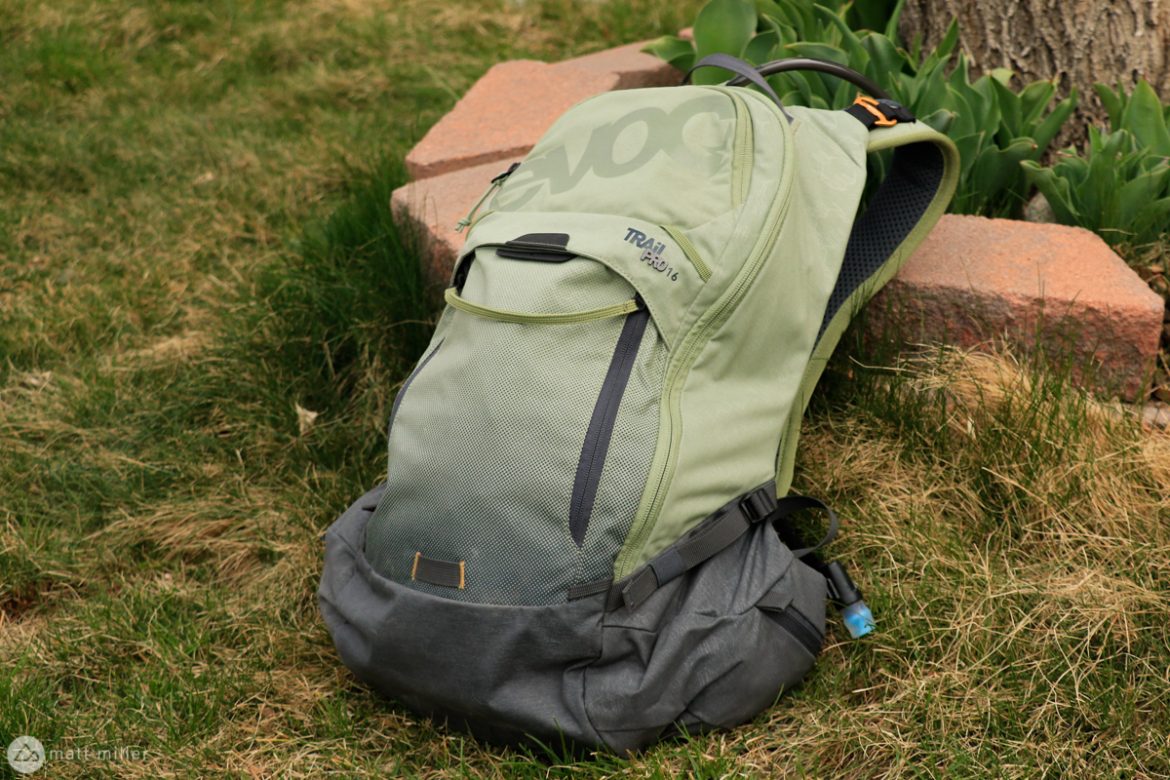
7. EVOC Trail Pro Hydration Backpack
- Price: $260
- Buy from Backcountry and REI
The EVOC Trail Pro stands out for its generous carrying capacity and ventilated back protection panel. The 16L size we tested sits in between the 10L and 26L versions and features five separate pouches plus an included rain cover. The EVOC Trail Pro doesn’t come with a hydration reservoir so you’ll need to purchase one separately. Read the full EVOC Trail Pro review.

8. Mission Workshop Hauser
- Price: $260
- Buy from Mission Workshop
The Mission Workshop Hauser is one of the most waterproof cycling backpacks we’ve tested thanks to quality materials and construction. Product tester Chris Daniels says, “it’s not the cheapest nor the lightest and doesn’t even come with a water reservoir, but between adjustable features, unique aesthetics, color choices, and an exceeding level of water resistance, the Hauser deserves a serious look from those serious about packs.” Read our in-depth review of the Mission Workshop Hauser backpack.


9. USWE Outlander Pro Hydration Pack
- Price: $110
- Buy from Jenson USA
The USWE Outlander Pro was a surprise favorite among a set of hydration vests we tested in 2022. It’s a lightweight, racy pack with an X-shaped harness system that keeps it stable during all-out efforts. Because the Outlander Pro fits so closely it’s not the most breathable and is designed for comfort in a riding position at the expense of off-the-bike comfort.
MTB hydration backpack buyers guide
Hydration backpacks come in all shapes and sizes, with price points that generally range from as low as $25 to as high as $250. As with any purchase, you’ll want to consider your riding style and unique needs for a mountain bike backpack.
MTB hydration pack types
MTB hydration packs are offered in a few distinct types. A typical mountain bike hydration pack is large enough to fit a hydration reservoir plus storage for items like tools, snacks, and extra clothing. MTB hydration packs come in many different sizes with some large enough to carry overnight items or professional photo gear. A few are designed with a hydration reservoir that sits lower in the pack to help with weight distribution.
Race- or light-style mountain bike hydration packs have very little room for storage outside of simple mesh pockets. These lightweight packs often fit a smaller hydration reservoir and utilize narrow shoulder straps.
Hydration vests are another specialized type of pack that’s even more form fitting than a race pack. Wider, vest-like straps offer storage space for small items like snack or gels that are easy to access.
Getting beyond MTB hydration packs meant to be worn on your back, there are also hydration hip packs and frame packs.

Reservoirs
A hydration reservoir is essentially a plastic bag for holding liquids with a flexible hose for drinking. Some people call these bladders, but that sounds sorta gross. So we’ll just call them reservoirs.
Reservoirs are offered in a few standard sizes including 1.5L, 2L, and 3L. Osprey is one of the few companies that offers a 2.5L reservoir if a 2L is too small but a 3L is too big.
Any reservoir from one of the big names — Camelbak, Osprey, and HydraPak — will be durable enough for biking. A quality reservoir should last at least a few seasons before it develops any leaks. Aside from punctures, the most common sources of hydration pack leaks are a loose cap/top flap or a bad connection where the hose attaches to the reservoir. Replacement parts are usually available from the most popular brands.
Hydration reservoirs are generally cross-compatible between packs so if you need to replace yours, or if your pack doesn’t come with one, just order a reservoir by itself. Expect to pay $30-60 for a reservoir alone, which can be as much as a complete pack.
We prefer reservoirs with a large fill cap or open end so that they’re easier to clean and dry. This also makes it easier to add ice cubes.

Cleaning your reservoir and hydration hose
It’s important to take care of your hydration reservoir and hose to avoid bad tastes, or worse, getting sick. Always rinse your reservoir after use, especially if you fill it with a liquid other than water. Get it as dry as possible by hanging to dry or turning inside out. Ensure the hose is clean and dry as well; use a pipe cleaner to get the hose extra clean.
Read more tips for keeping your hydration reservoir clean and mold-free.
MTB backpack fit and comfort
Comfort is key when it comes to choosing a hydration pack for mountain biking. An uncomfortable or ill-fitting pack can easily ruin any ride.
In general packs with wider shoulder straps do a better job distributing weight and are more comfortable. Women in particular may find traditional shoulder straps uncomfortable; some have found Camelbak’s women’s packs’ S-curved shoulder harness or USWE packs with cross-straps to be a good fit.
Most hydration packs will have some padding on the straps and also the back too. Adjustable straps are a must to fit a wide range of rider heights. A quality sternum strap helps stabilize the pack.
Waist straps are nearly as important as shoulder straps when it comes to hydration backpacks. Ideally the waist strap will carry much of the weight so it’s important to make sure you can cinch the strap for a proper fit. Here again, a wider strap is better to avoid pinching and discomfort. Oversized, quality buckles are generally featured on higher-end packs.
If you ride in hot conditions regularly, look for a hydration pack with a well-vented back panel. Most will use some type of mesh or a rigid system that creates space for air to circulate between the pack and the rider’s back.
Features like padding and ventilation can add weight and bulk to packs which is a tradeoff. While the weight of an empty pack is small compared to the weight of the contents, a pack’s weight is a big part of comfort on the trail.
Finally, some packs are designed for special wide, lumbar reservoirs. A lumbar pack and reservoir places liquid weight lower in the pack which many riders find more comfortable since it’s away from shoulders and closer to the hips.

Mountain bike backpacks for kids
A few brands make smaller hydration backpacks specifically for kids. Two that we like are the Camelbak Mini Mule and Osprey Moki (available at Backcountry).
Storage capacity
Most riders will want to haul more than just water in a mountain bike backpack. Brands generally communicate storage capacity in terms of liters (L) for comparison. Eight to ten liters is an average amount of storage. Overnight and photo bags can offer 18L or more capacity. Less than six liters is generally considered a lightweight or race pack since much of that capacity will be used for the hydration reservoir.
It’s helpful to have some form of organization within the bag’s main storage compartments in the form of sleeves or internal pockets. Even more helpful are external pockets and sleeves that can be accessed without completely removing the pack.
We like packs with side pouches and compartments attached to shoulder and waist straps for easy access on the trail. Some packs also feature stretchy cords on the outside for lashing additional items to the pack. This is a great way to carry an extra layer or even a sub sandwich.
Other features to look for
Depending on your needs, there are other hydration backpack features to consider. Some packs, including the EVOC Trail Pro and Thule Rail Pro include back protection built into the pack. Many enduro riders look for a pack with this feature.
Most packs feature DWR protection for water resistance, but not waterproof-ness. The Mission Workshop Hauser is a waterproof cycling backpack. Some packs may come with a detachable rain cover to keep water out.
Hydration packs are offered in a variety of colors and patterns to suit a wide variety of styles. If you’re riding in areas where hunting is common, a brightly colored pack may be a better choice than a camo or earth-toned pack.
Your turn: Tell us about your favorite hydration backpack for mountain biking in the comments below.


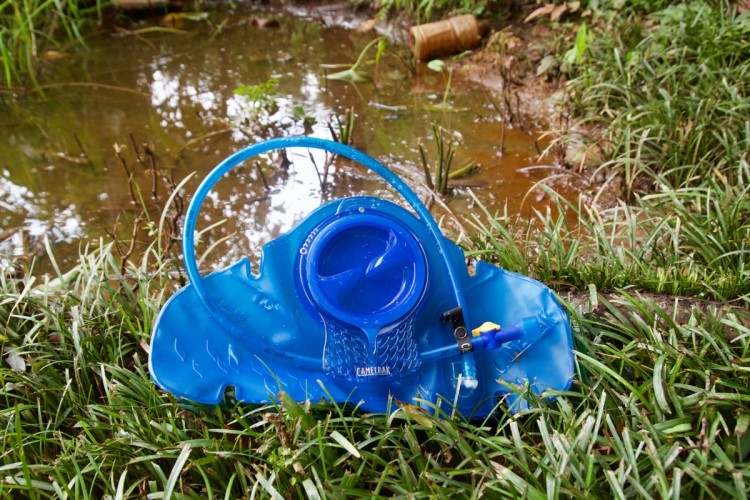



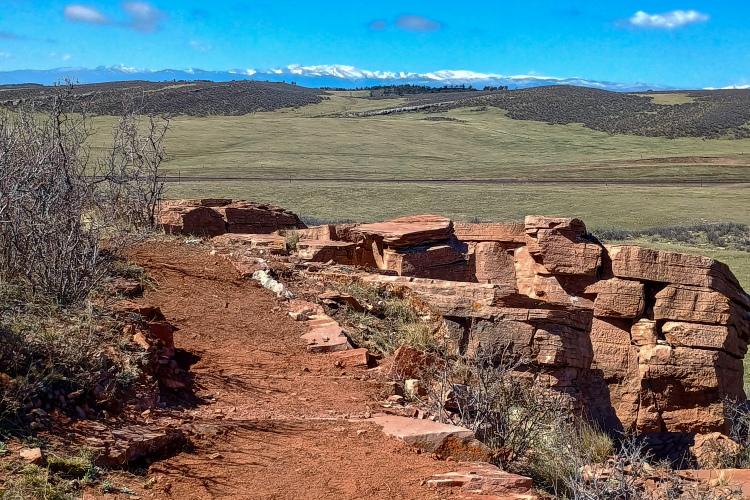
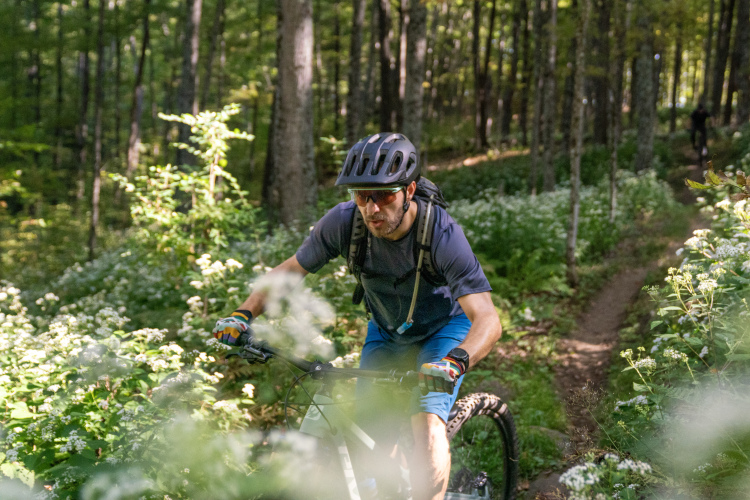
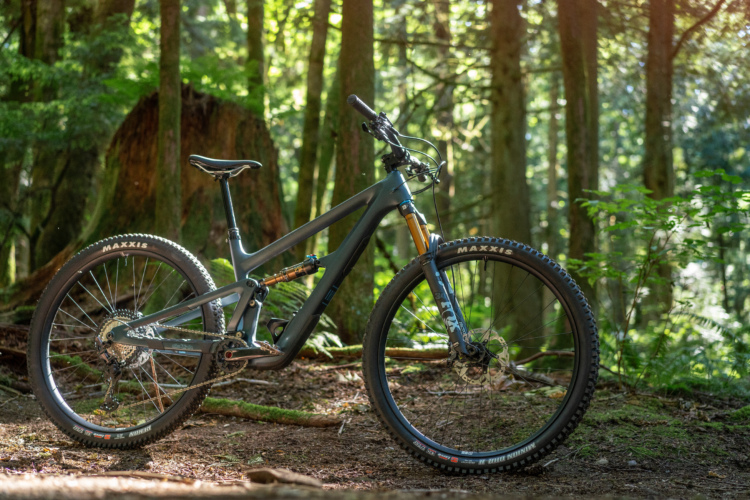
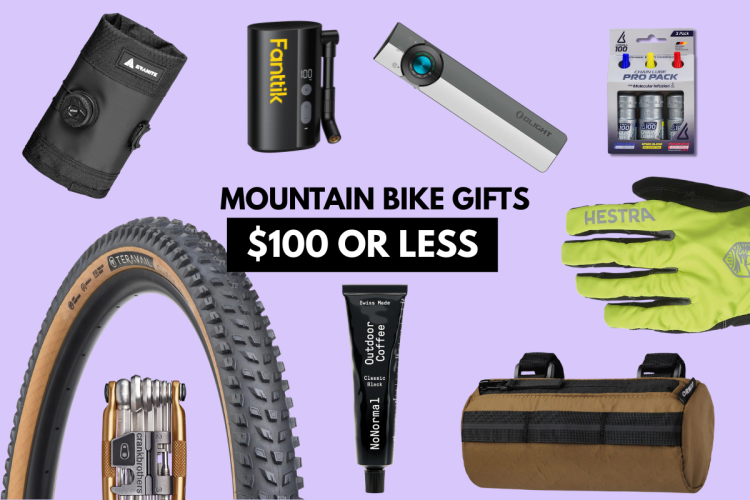

1 Comments
Jan 23, 2024